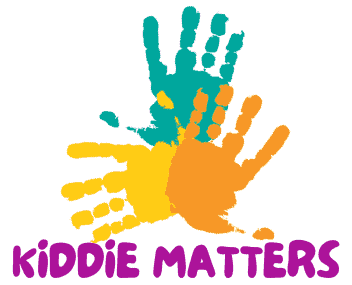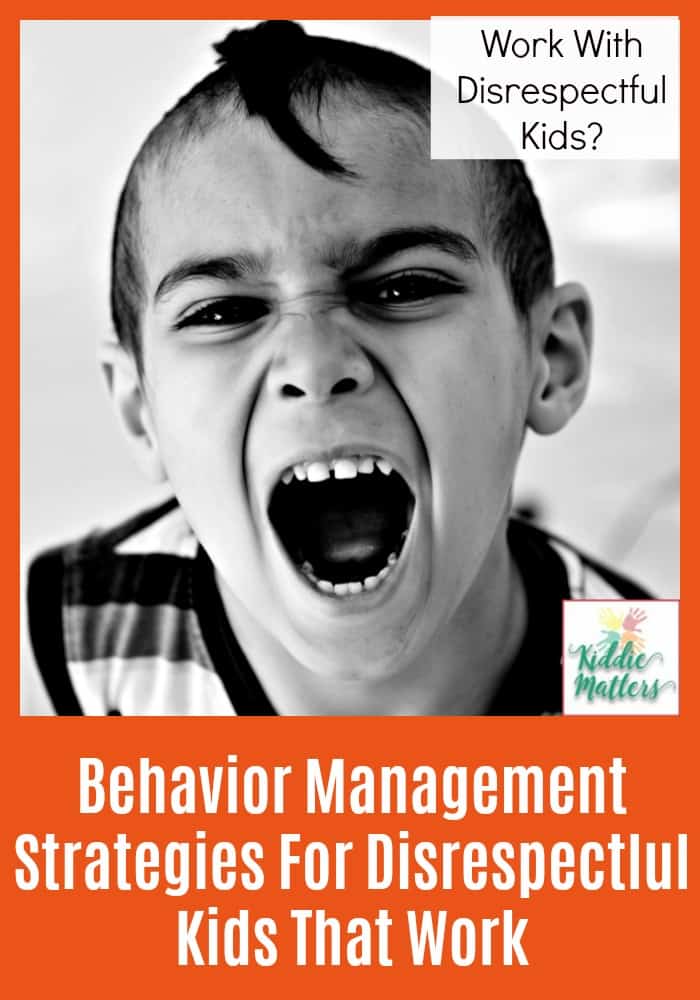The Best Way To Build Trust With Students: 10 Powerful Trauma Informed Practices
Are you struggling to support kids who’ve been through rough times and faced serious challenges? Maybe they seem distant, disrespectful, and have a wall up to keep everyone out. It’s hard to watch them suffer, but you just don’t know how to reach them.
You’re not alone. Many educators and school staff around the country are in the same boat. We’re at a crisis point. Research shows that more than two thirds of children reported at least one traumatic event by age 16. These traumatic events include psychological, physical, or sexual abuse, community or school violence, witnessing domestic violence, and natural disasters.
With more and more children coming to school with trauma related behaviors, it’s important that we find effective ways to support them. However, many of us don’t have a clue what to do and are just winging it.
But That’s A Huge Problem
Helping kids affected by trauma feel safe and supported is essential for them to perform well academically. Studies show that students who feel safe and supported at school tend to have positive relationships with their peers and teachers, are more engaged in learning, and demonstrate improved academic performance.
If you’re not trained or don’t have the right tools to help students who’ve been through trauma, you might not know how to recognize them or give them the support they need. In some cases, you may end up inadvertently re-traumatizing them.
But this isn’t breaking news for me.
Early on in my social work career, I often misinterpreted trauma-related behaviors as deliberate defiance or disrespect on the student’s part. This led me to support punitive discipline measures that only made the situation worse and ruptured whatever connection I had with the student.
Once that connection was broken, so was their trust in me. The lack of trust made it difficult to build a meaningful relationship with the student, which is crucial if you want to help children succeed in school and beyond.
Ultimately, I want to make a positive impact on the lives of the children I serve. As it turns out, having strong attachments with caring adults is directly related to resiliency and a child’s ability to cope with trauma. Building positive relationships with children helps them feel understood, supported, and connected to the school community. However, the effects of trauma can make it challenging for kids to build trust with you.

Why It’s Hard To Build Trust After Trauma
When a child experiences trauma, especially during critical periods of brain development, it can have profound and lasting effects on their ability to build trust and form secure attachments. Secure attachments, which are formed through consistent and responsive caregiving, play a crucial role in children’s emotional and social development. They serve as the foundation for children to learn how to trust others, regulate their emotions, and navigate relationships throughout life.
However, trauma often robs children of their sense of safety and security, which can disrupt the formation of secure attachment bonds. Kids may have a heightened sense of danger and struggle to distinguish between safe and unsafe situations or people. This can lead to hypervigilance, difficulty forming close relationships, and a general mistrust of others.
Also, traumatic experiences can activate the body’s stress response system, flooding the brain with stress hormones such as cortisol. Prolonged exposure to elevated levels of stress hormones can disrupt the normal development of brain regions involved in emotional processing and attachment, such as the amygdala and prefrontal cortex.
The amygdala, responsible for processing emotions, may become overactive, leading to increased fear and anxiety. Meanwhile, the prefrontal cortex, crucial for decision-making and emotional regulation, may be impaired, making it challenging for children to regulate their emotions, understand social cues, and form healthy relationships.
It’s Important to Remember
Children affected by trauma may internalize negative beliefs about themselves that make it difficult for them to build trust. They might start to believe they don’t deserve love or care because of what happened to them. These beliefs often come from thinking they caused the trauma or from feeling like there’s something wrong with them.
In relationships, children dealing with trauma may exhibit behaviors that reflect their internalized beliefs. They might fear being rejected or abandoned, so they avoid getting close to people. On the other hand, they might end up in unhealthy relationships because they believe they don’t deserve anything better.
These negative beliefs can also affect how kids see social interactions. They can sometimes misunderstand what others do or mean, thinking even nice gestures are signs of rejection or betrayal. This makes it hard for them to build trust and connect with others.

Here’s A Solution
Nowadays when I’m working with kids, especially kids affected by trauma, I dig into my toolkit of trauma informed practices to find ways to approach our interaction with compassion, composure, and understanding.
A trauma-informed approach allows you to better understand the underlying causes of children’s behaviors and reactions. When you recognize the impact of trauma on children’s well-being, you’re better able to show them grace and empathize with what they’ve been through. Your focus shifts from “what’s wrong with them” to “what happened to them.”
Taking a trauma informed approach allows you to not take it personally when kids struggle to trust or connect with you. Rather than interpreting their behavior as defiance or rejection, you recognize their need for safety and validation. Frustration is replaced with compassion and admiration for how they adapted to protect themselves from getting hurt again.
Related: How To Build Rapport With Students: 30 Ways To Connect (printable)
What Does It Mean To Be Trauma Informed?
Being trauma-informed in a school setting means understanding the impact of trauma on students’ lives and behaviors and integrating this knowledge into all aspects of the school environment. It involves recognizing the prevalence of trauma and its effects on students’ academic performance, behavior, and relationships.
When you’re using a trauma informed approach, you’re curious about what student behaviors are telling you. For instance, what need is the behavior meeting for the child? What does it tell you about what they need right now?
Implementing a trauma informed approach in schools creates an environment where students impacted by trauma can feel safe and supported. When kids feel safe and their experiences are validated, they’re more likely to engage and open up.
Are you ready to find out how you can create a supportive and caring environment that make kids feel safe enough to let their guards down?
Related: How To Teach Kids About Feelings: 85 Creative Activities for Children.
10 Trauma Informed Practices To Build Trust With Kids
- Create a Safe Environment: Cultivating a safe learning environment shows kids you care about them. Keep the space physically safe by maintaining structure and by making sure there are no dangers. To make the learning environment emotionally safe, try doing the following:
- Designate A Calm Down Area: Create a comfy space where kids can go to manage their feelings and take a break. Find a quiet spot, add cozy seating like bean bags or cushions, and include sensory tools like stress balls or fidget toys for self-soothing. Create a peaceful atmosphere by using calming music and soft lights. You can put up visuals with de-escalation tips and positive messages. Let kids personalize the area with things they like, and clearly explain how to use the calm down area so they feel comfortable using it when they need to.
- Have Regular Feelings Check-Ins: Regular feelings check-ins, like daily morning meetings and writing SEL journal prompts, help kids understand and manage their emotions better. They create a safe space for students to express how they feel, which builds trust with adults and peers. These check-ins are essential for prioritizing emotional well-being in school.
- Use Restorative Practices. Restorative practices nurture healthy relationships between students, their peers, and school staff. These practices give everyone a fresh start each day and a chance to learn from their mistakes. For example, instead of punishing students who are not getting along, a restorative approach might involve a meeting where they can talk, listen, and work together to solve the issue. This helps kids understand each other better, find common ground, and fix their relationship.
- Celebrate Diversity. Celebrating diversity in schools makes everyone feel accepted and respected. When schools value different backgrounds and cultures, students feel like they belong and are less likely to face discrimination. Celebrating diversity helps students understand and appreciate each other.
- Designate A Calm Down Area: Create a comfy space where kids can go to manage their feelings and take a break. Find a quiet spot, add cozy seating like bean bags or cushions, and include sensory tools like stress balls or fidget toys for self-soothing. Create a peaceful atmosphere by using calming music and soft lights. You can put up visuals with de-escalation tips and positive messages. Let kids personalize the area with things they like, and clearly explain how to use the calm down area so they feel comfortable using it when they need to.
- Show Empathy: Be genuinely caring and understanding when children share their experiences and feelings. Let them know you understand and accept how they feel and what they think. When kids feel that you truly care about them and acknowledge their emotions, they’re more likely to trust you.
- Listen Actively: Practice active listening by giving kids your full attention. Acknowledge their thoughts and feelings and refrain from judgment or interruption. Many kids had their voices silenced or ignored in the past. Actively listening can help them feel validated and respected.
- Build Rapport: Get to know kids by showing genuine interest in their hobbies and preferences. This helps build a connection and strengthens rapport. When building rapport with kids, it’s important to:
- Be Transparent-Be open and honest with students about your role, intentions, and any changes or decisions that may affect them. Past experiences of betrayal or secrecy can make it hard for kids to trust adults. When you’re transparent, you show kids that you’re trustworthy and that they can count on you. This honesty builds trust because it shows kids that you respect them enough to be upfront about things that might impact them.
- Be Consistent: Maintain consistency in your interactions, responses, and expectations. Trauma often causes feelings of chaos and unpredictability. Consistency provides a stable environment that children can rely on. When kids know what to expect, they can begin to feel more comfortable and less anxious. Over time, this consistent care and stability can help them learn to trust others again.
- Follow Through-Honor your commitments and promises to children. This helps kids build trust because it shows them that you mean what you say and that they can count on you. When children see that you consistently keep your word, it reassures them that you’re dependable and trustworthy.
- Be Transparent-Be open and honest with students about your role, intentions, and any changes or decisions that may affect them. Past experiences of betrayal or secrecy can make it hard for kids to trust adults. When you’re transparent, you show kids that you’re trustworthy and that they can count on you. This honesty builds trust because it shows kids that you respect them enough to be upfront about things that might impact them.
- Respect Boundaries: Respect children’s personal space and allow them to set boundaries for themselves when interacting with you and others. Doing this shows kids that their feelings and autonomy are respected. When kids see that you respect their boundaries, they’re more likely to trust you and feel comfortable opening up.
- Offer Choices: Give kids a chance to choose and control things when you can. When they can decide things, like picking assignments or activities, they feel more in control of what’s happening around them. This is especially important for kids who’ve been through trauma, since trauma can make them feel like they have no power or control.
- Practice Mindful Awareness: Being mindfully aware means to be fully present with your thoughts and feelings, without judging, and with an open heart and mind. When you’re with kids who’ve been through trauma, being mindful helps you understand their needs and feelings better. By giving kids your full attention, you make them feel heard and supported, which builds trust. Also, being mindful helps you manage your own emotions and reactions, which is important when helping kids with trauma.
- Celebrate Progress: Acknowledge and celebrate students’ progress, achievements, and efforts, even the small ones. This boosts their confidence and helps them trust in their own abilities. When you recognize their accomplishments, it shows that you believe in them and value their hard work. This positive reinforcement builds a sense of trust because it reassures students that you’re on their side and rooting for their success. Over time, this encouragement helps them feel more confident and secure in themselves and their relationship with you.
- Promote Growth Mindset: A growth mindset means seeing mistakes as chances to learn and grow, not as failures. When kids know it’s okay to mess up and that they won’t be judged, they trust themselves and you more. They learn that mistakes are normal and that they’ll get help to do better. Also, when you focus on how hard kids try instead of how smart they are, you show them their effort matters. This makes kids feel valued and builds trust because they know you see and appreciate their hard work, no matter where they start.
- Teach Social Emotional Learning Skills– Teaching SEL skills creates an emotionally safe learning environment by equipping children with the social and emotional tools they need to navigate relationships, manage emotions, and thrive academically and personally. This includes:
- Emotional Awareness: SEL teaches children to recognize and understand their own emotions and those of others. By understanding their feelings, children can communicate more effectively and seek support when needed, fostering a sense of safety and belonging in the classroom.
- Emotional Regulation: SEL equips children with strategies to manage their emotions in healthy ways. When children have tools to regulate their emotions, they are better able to handle stress, conflict, and challenging situations, creating a calmer and more supportive learning environment for everyone.
- Empathy and Respect: SEL emphasizes empathy, compassion, and respect for others. When children learn to understand and appreciate different perspectives, they are more likely to collaborate, communicate respectfully, and build positive relationships with peers and teachers. This sense of empathy and respect contributes to a culture of inclusivity and acceptance in the classroom.
- Conflict Resolution: SEL teaches children constructive ways to resolve conflicts and solve problems. By learning to communicate effectively, listen actively, and negotiate with others, children learn to solve conflicts peacefully and constructively. This tends to reduce tension and promote a sense of safety and cooperation in the school environment.
- Building Relationships: SEL activities and lessons often focus on building strong, supportive relationships among students and between students and teachers. When children feel connected and supported by their peers and adults, they are more likely to feel safe expressing themselves, taking academic risks, and engaging in the learning process.
- Emotional Awareness: SEL teaches children to recognize and understand their own emotions and those of others. By understanding their feelings, children can communicate more effectively and seek support when needed, fostering a sense of safety and belonging in the classroom.
Want More?
For more ideas on how to connect with kids and gain their trust, check out How To Build Rapport With Students: 30 Ways To Connect
Before you go, get my FREE cheat sheet: 10 Best Trauma Informed Practices To Build Trust
Your Turn
How do you build trust with kids? Share your ideas in the comments!
Hi! I’m Yanique. I’m a Licensed Clinical Social Worker and former school social worker. I believe that you can make a difference in the emotional well-being of the students’ you serve and still make time for self-care. The good news, all you need is 10 minutes a day! Start here >>





